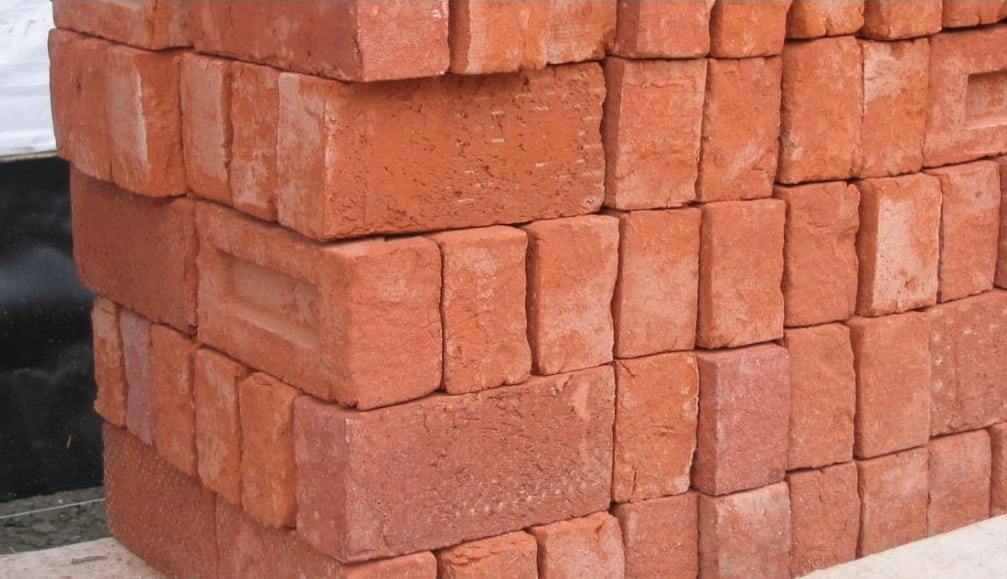Brick is one of the oldest and most popular construction material and continues to be a leading construction material. It is a cheap, durable, easy to handle and work with. Red or clay bricks are basic construction material for construction of the home.
Brick is rectangular in shape and its size is such that it can be conventionally handled with one hand only. Red bricks are made of burnt clay or mixture of sand and lime. They are commonly used since these are economical and easily available everywhere.

Courtesy - shreeinternational
Red Bricks are classified into two categories:
01. Based on method of manufacturing and
02. Based on the shape
Based on the manufacturing method, red bricks are classified as follow:
01. Unburnt or Sun-dried Bricks
Unburnt bricks are made from the clay which is dried with the help of heat received from the sun after the process of moulding. Hence these types of red brick are not that strong and can’t be used in the permanent structure. Unburnt bricks are less durable and hence used in the temporary structures.
02. Burnt Clay Bricks
Burnt clay bricks are also made from clay but clay is burnt in kiln inside the factory. These types of red brick are the most commonly used bricks for construction works. Burnt bricks are good in quality. However, they also have one or other defects and hence,
Burnt clay bricks are classified into four different types of red brick:
01. First Class Bricks
First class bricks are good quality as compared to other classes. Good bricks are manufactured from good quality plastic earth which is free from saline deposits. First class bricks are moulded by table-moulding and burnt in large kilns. They have a standard size. They are uniform in colour. They are well burnt; the hard ringing sound is emitted when two bricks are struck together. They have straight edges and even surfaces. They are free from cracks, chips, flaws and nodules of lime. They have less water absorption and more strength.
Uses: First class bricks are used for the permanent structures, i.e. external wall, flooring, reinforced brickwork, arches, etc. They are costly than other types class of brick.
02. Second Class Brick
Second Class brick is ground moulded and these bricks are burnt in kilns. Second class bricks also conform to the standard size but they are slightly irregular in shape and colour. They are also fully burnt, and a ringing sound is emitted when two bricks are struck together. It may have hair cracks and their edges may not be as sharp and uniform as compared to first class brick.
Uses: For exterior work when plastering is done, i.e. compound walls, Partition walls. Also, it can also be used for interior works but not for flooring. They have more tensile strength and water absorption.
03. Third Class Bricks
Third class bricks are not fully burnt, due to which they are of reddish-yellow colour. They are not hard and they have rough surfaces with irregular and distorted edges. They have less strength and high water absorption.
Uses: These bricks are used for unimportant and temporary structures and at the place where rainfall is not heavy, i.e. small brick foundations, paving, etc.
04. Fourth Class Bricks
Fourth class bricks are as such very poor quality bricks. They are crushed and used as aggregates which are obtained by overburning. Hence these break easily and not suitable for the main element of the building.
Fourth class bricks are classified into two types:
Zhamas- Zhamas are the over burnt bricks that get fused being near the fire in the kiln, and have very irregular shape. It is not used for normal engineering works.
Pilas – Pilas are under burnt or half burnt bricks, which have a yellow colour. They are very poor in strength and are easily broken when dropped on the hard ground.
Uses: These bricks are used as aggregate for concrete in foundations, floors, roads, etc.
There are different types of brick used for construction purposes. Different types of red brick are selected based on their function and insulating or decorative elements.



